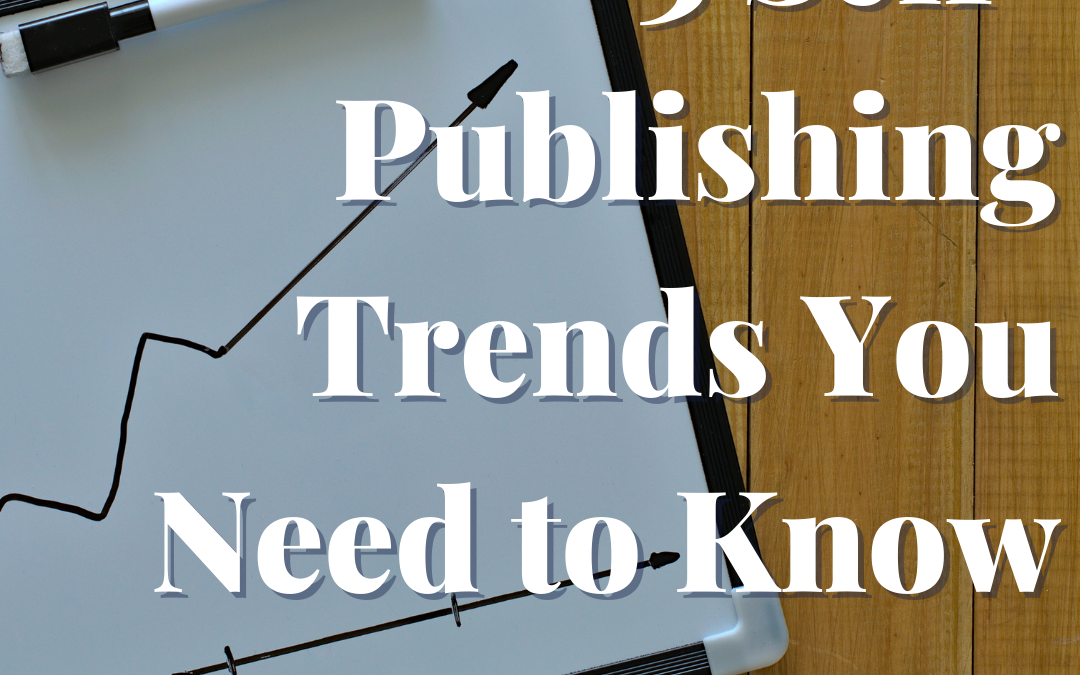Recently, some of the greatest minds in the self-publishing industry sat down to talk about self-publishing trends. Well—at least, the greatest minds at Draft2Digital.
Specifically, we wanted to talk about trends and dabble in predicting the future. If 2021 was the year of more author reach, what does 2022 have in store?
These three self-publishing trends are top of mind for us. In our humble opinion, every indie author out there should be paying attention.
Self-Publishing Trend #1: Direct Sales
We’ve long touted the virtues of selling directly to your email list. Tools like a regularly scheduled newsletter and other direct-to-reader contact are invaluable.
That’s because most sales require some cash outlay from you. You spend your advertising dollars on Facebook, Amazon, BookBub, and elsewhere. Ideally, there’s a positive return on investment for that spend.
Contacting your fans directly via email, however, is free. (Or nearly free, depending on the size of your mailing list.)
With that one-on-one line of contact comes the ability for your readers to purchase your books directly from you. A combination of tools like Payhip and BookFunnel make direct sales not only possible but simple. Joanna Penn has already written a lot of content on this topic, so go check out her blog for more detail on how to do it.
As for the why, it’s all about the math. When you aren’t sharing a 30% split with a retailer like Amazon, that’s more $$$ in your pocket. It’s good for your readers, too, because you can sell books and box sets for less.
Self-Publishing Trend #2: Democratization
Some in the industry are predicting that indie publishing will become the only form of publishing, as large traditional publishers fade into the background and ultimately close their doors.
While we don’t expect traditional publishers to disappear any time soon, it’s clear that the industry has already changed. Indie publishing and ebooks have changed the game, and traditional publishers will need to adjust to stay profitable.
We think this will mean more opportunities for small indie presses to publish a wider variety of print, audio, and ebooks. Traditional publishers will have to get more limber and act more like indie publishers to keep up.
Intrigued? Check out Kristine Katherine Rusch’s excellent 2021 lookback series. She’s got some very insightful blog posts about the future of the industry.
Self-Publishing Trend #3: NFTs and Blockchain
NOTE: As we learn more about NFTs and Blockchain—their nature and uses, current capabilities, etc.—the team at Draft2Digital believes that these are not yet beneficial for authors. We have left this section of the guest post intact because this is, in fact, a trend in self-publishing. It’s just not a trend we currently endorse. We welcome any and all (civil and polite) discussion about this in the comments.
If the acronym “NFT” makes you go, “What now?”, don’t worry. Here’s a great article from The Verge explaining what NFTs are much more eloquently than we can.’
If you’re wondering what digital tokens have to do with self-publishing, the answer lies in the protection of intellectual property and digital rights.
Groups like ALLi have spent years working tirelessly to protect the rights of authors in an environment that has traditionally been dictated by how much an author can afford to spend on a lawyer if something goes awry.
NFTs could change all that, removing humans from the equation and keeping your IP safe in a way that ensures you always benefit, no matter how many times your work changes hands.
In theory, you wouldn’t have to constantly scour the internet for misuse of your work. NFTs would handle all that for you. Some industry insiders see some potential for this trend to benefit indie authors, while others remain skeptical, so take this Trend with a grain of salt.
We’re excited to see where these and other self-publishing trends are headed. So tell us—what trends do YOU find most interesting this year?
(Not all opinions mentioned in today’s article reflect the opinions of Draft2Digital.)
